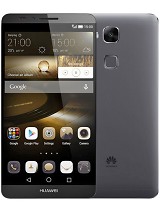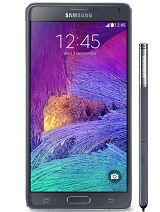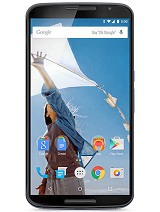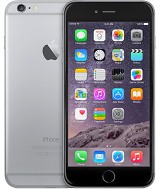GSMArena smartphone buyer's guide: February 2015
February 2015
€400-€500
The Huawei Ascend Mate7 is the metal-clad phablet that HTC hasn't made in a while. It has a large 6" screen with 1080p resolution, not QHD but still sharp enough. It also has one of the best fingerprint reader implementations we've seen.
That aside, it relies on a homebrewed chipset, but this one with newer CPU and GPU designs. The processor is a big.LITTLE octa-core with Cortex-A15 and A7 and it's coupled with either 2GB or 3GB RAM (depending on the storage).
In either case it runs Android 4.4 KitKat and offers a 13MP/1080p main camera plus a 5MP/720p selfie camera.
 Huawei Ascend Mate7 |
Pros | Cons |
|
|
|
| Review | ||
Over €500
Here's the thing - we skipped practically the entire €400-€500 segment as the MWC is less than a month away and new flagships will be unveiled. For example, we will certainly see the Galaxy S6 so buying a Galaxy S5 is not recommended - even if you don't like the S6, at least you can try to get a better deal on the S5.
So we skipped over flagships that are likely to be replaced very soon and are not particularly cheap at the moment either.
Even the €500+ segment is pretty sparse, here we really only a few offerings.
The first is the Samsung Galaxy Note 4. That one is not getting replaced until later this year (at IFA) and is one of the best and most popular Android devices. It's interesting to see people warm up to the S Pen until their first instinct when taking a note is to reach for their trusty Galaxy phablet.
Having come out late last year, the Galaxy Note 4 has some of the best tech around, a QHD Super AMOLED screen and a 16MP camera (using a Samsung sensor) and optical image stabilization. It records 2160p video (of course) while the 3.7MP selfie camera goes up to 1440p.
It comes with two chipsets, a Snapdragon 805 or an Exynos 5433. If you don't know what those are then it doesn't matter much. For geeks, the S805 version will probably get more custom ROMs.
 Samsung Galaxy Note 4 |
Pros | Cons |
|
||
| Review | ||
A similar phablet is the Nexus 6 built by Motorola. It has a 6" AMOLED display with QHD resolution, a 13MP OIS camera with 2160p video and a Snapdragon 805 chipset. It's closely matched to the Note 4, except with fast updates to pure Android.
The camera has an interesting ring-LED flash. The Nexus 6 also has stereo speakers over the Galaxy phablet and basic water resistance. There's no stylus though and no microSD card slot is not ideal either, at least the base model is 32GB, which should be enough.
 Motorola Nexus 6 (32GB) |
Pros | Cons |
|
|
|
| Review | ||
The iPhone 6 Plus is Apple's first phablet and we think the better of the two iPhones. While the iPhone 6 feels like pushing the iPhone 5s just enough to catch up to older Androids, the iPhone 6 Plus marks the first jump in pixel density since the iPhone 4 (thanks to its 1080p screen) and offers Apple's first optical image stabilization.
The company is yet to progress beyond 8MP for stills and 1080p for videos, but it offers some of the best performance at its chosen resolutions. The cameras on both iPhone 6 models also have phase-detection autofocus. Even for 1080p footage we wish the base model had more than 16GB though - it runs out quickly and there's no way to expand it.
The iPhones also offer mobile payments - not a first, but seems to be gaining popularity quicker than competing services (like Google Wallet). And they have the best fingerprint reader in the business too (the swipe reader on the Note 4 is not as good).
 Apple iPhone 6 Plus |
Pros | Cons |
|
|
|
| Review | ||
Reader comments
- AnonD-190634
- 09 Jun 2015
- HIk
i wish gsmarena did another after few devices came out like now! or kept updating it as new devices came out!
- Notarius
- 28 Feb 2015
- S7x
OnePlus one, 64gb version, perfect phone.
- Anonymous
- 25 Feb 2015
- Hq5
I tested my phone in water and it didn't work then Sony did not want to fix it